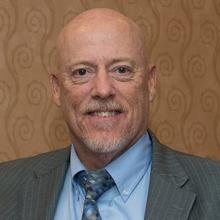OSAC Expands Outreach to Non-Traditional Forensic Science Service Providers

By Steven Johnson, former FSSB Chair and current OSAC Registry Implementation Ambassador
Since its inception in early 2014, OSAC has continued to help foster the development of forensic science standards across a broad spectrum of disciplines. Prior to 2014, the guidance documents developed for various forensic science disciplines were generated by Scientific Working Groups (SWGs) that were funded by the National Institute of Justice (NIJ). When NIJ funding ceased in late 2013, the National Institute of Standards and Technology (NIST) continued the support of the standards development process by creating OSAC. The ongoing mission of OSAC is to "strengthen the nation's use of forensic science by facilitating the development of technically sound standards and guidelines and encouraging their use throughout the forensic science community”. These standards and guidelines, once approved, are placed on the OSAC Registry and are available for public review.
Initially, OSAC consisted of 25 discipline-specific subcommittees falling under five Scientific Area Committees (SACs). The original five SACs and 25 subcommittees were:
- Biology
- Biology Data Interpretation & Reporting
- Biological Methods
- Wildlife Forensics
- Chemistry/Instrumental Analysis
- Fire Debris & Explosives
- Geological Materials
- Gunshot Residue
- Materials (Trace)
- Seized Drugs
- Toxicology
- Crime Scene/Death Investigation
- Anthropology
- Crime Scene Investigation (added subsequent to the original founding)
- Disaster Victim Identification
- Dogs and Sensors
- Fire and Explosive Investigation
- Odontology
- Digital Multimedia
- Digital Evidence (added subsequent to the original founding)
- Facial Identification
- Speaker Recognition
- Video Imaging Technology & Analysis
- Physics/Pattern Interpretation
- Bloodstain Pattern Analysis
- Firearms & Toolmarks
- Footwear & Tire
- Forensic Document Examination
- Friction Ridge
A reorganization of OSAC in 2020 decreased the number of subcommittees to 22 and increased the number of SACs to seven. The reorganization allowed for OSAC to streamline some of their document development processes and better align similar forensics science activities under the same SAC. The current SACs and subcommittees include:
- Biology
- Human Forensic Biology
- Wildlife Forensic Biology
- Chemistry: Seized Drug & Toxicology
- Forensic Toxicology
- Seized Drugs
- Chemistry: Trace Evidence
- Ignitable Liquids, Explosives & Gunshot Residue
- Trace Materials
- Digital/Multimedia
- Digital Evidence
- Facial Identification
- Speaker Recognition
- Video Imaging Technology & Analysis
- Medicine
- Forensic Anthropology
- Forensic Nursing
- Forensic Odontology
- Medicolegal Death Investigation
- Physics/Pattern Interpretation
- Bloodstain Pattern Analysis
- Firearms & Toolmarks
- Footwear & Tire
- Forensic Document Examination
- Friction Ridge
- Scene Examination
- Crime Scene Investigation & Reconstruction
- Dogs and Sensors
- Fire & Explosion Investigation
Over 800 volunteer members and affiliates work diligently to provide the forensic science community with the tools to improve the professionalism and effectiveness of the various disciplines represented through OSAC.
In the summer of 2018, the Forensic Science Standards Board (FSSB), OSAC's governing body, created an “implementation strategy” to increase outreach to community stakeholders and encourage implementation of standards that are on the OSAC Registry. The initial outreach was directed to engage with the over 400 traditional forensic science service providers (FSSPs) to open lines of communication regarding the benefits of implementation. In early 2022, OSAC recognized that there were many other “non-traditional” FSSPs who could benefit from similar outreach efforts. This past October, the OSAC Program Office (OPO) added a non-traditional outreach coordinator to their team to engage with those forensic science service providers (FSSPs) that fall outside the 400+ currently recognized laboratories. These non-traditional FSSPs represent thousands, if not tens of thousands, of small forensic operations that may only provide examination or analysis support in one or a few disciplines. Many of these non-traditional FSSPs are extensions of law enforcement agencies, but a good number of them are privately owned and operated. OSAC believes these non-traditional FSSPs are significant stakeholders in the standards development and implementation effort, and providing a resource to initiate communication and open channels to these organizations is the next, best step to building the enterprise.
This summer (June 2023), OSAC will be moving away from a “survey based” outreach effort to more of an “open enrollment” model to streamline the implementation process. OSAC implementation coordinators (Mark Stolorow and Steve Johnson) will continue to communicate and engage with the FSSP community and encourage standards implementation. Some additional tools that are in development to assist with this effort are “Checklists” and “Fact Sheets” that will help the FSSP understand the science and necessity behind the standard as well as provide a way to determine milestones as these standards are put into place.
Among the disciplines that are often under-represented or (possibly) overlooked in the non-traditional realm are latent print examination, facial examination, footwear examination, firearms/tool mark examination, crime scene and digital evidence (among others). These non-traditional FSSPs face significant challenges when it comes to funding and supporting their respective operations which includes maintaining high quality assurance and control. The hope is that OSAC, through this expanded outreach effort, can help clear up any misconceptions about standards implementation and facilitate full or partial implementation of standards on the Registry as they apply to those FSSPs. As the focus on forensic science continues to intensify, it’s critical that stakeholders across the spectrum of the criminal justice and law enforcement communities continue to engage, communicate and understand the value of standards and guidelines implementation.
Please reach out Steven Johnson (steven.johnson [at] idealinnovations.com (steven[dot]johnson[at]idealinnovations[dot]com)) if you are interested in discussing standards or starting the standards implementation journey in your agency.

